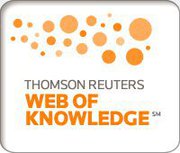There is often some confusion around Journal Impact Factors in terms of where they come from, how they’re calculated and what they mean. Hopefully the following will provide a brief explanation.

What are Journal Impact Factors?
Journal Impact Factors are just one of a number of journal analytical measures that form part of an online resource provided by Thomson Reuters on their Web of Knowledge called Journal Citation Reports® (JCR), which covers journals in the sciences, technology and social sciences. JCR provides a facility for the evaluation and comparison of journals across fields within the subject areas covered.
Other publications databases may provide their own tools for bibliometric or citation analysis (such as Elsevier’s Scopus) but Journal Impact Factors are only found on the Web of Knowledge.
A Journal Impact Factor is the average number of times that articles from a particular journal published in the past two years have been cited in the JCR year.
How are Journal Impact Factors calculated?
Journal Impact Factors are calculated by dividing the number of citations to articles published by a particular journal in the JCR year by the total number of articles published in the two previous years. For example, an Impact Factor of 2.5 means that, on average, the articles published in that journal up to two years ago have been cited two and a half times. Citing articles may be from the same journal although most citing articles are from different journals.
The number of articles given for journals listed in JCR primarily include original research and review articles. Editorials, letters, news items and meeting abstracts are usually not included in article counts because they are not generally cited. Journals published in non-English languages or using non-Roman alphabets may be less accessible to researchers worldwide, which can influence their citation patterns.
How are Journal Impact Factors used?
Journal Impact Factors can help in understanding how many citations journals have received over a particular period – it is possible to see trends over time and across subject areas, and they may help when you’re deciding where to publish an academic paper. However, as with all statistics, Journal Impact Factors should be used with caution and should ideally be combined with other metrics depending on how they’re being applied.
Equally, a journal’s Impact Factor is not necessarily a direct indicator of the quality of an individual paper published in that journal. Some published articles never receive any citations, for various reasons, even if they appear in a high impact factored journal.
Journal Impact Factors and the REF
Some of the assessment panels will be provided with citation metrics as part of HEFCE’s Research Excellence Framework (REF) in some subject areas, which will help inform the panel members’ judgements. However, journal impact factors or equivalent journal ranking systems (e.g. the ABS list) will NOT be used at all within the assessment process.











 Register now to attend the 17th Annual Postgraduate Research Conference – Wednesday 3 December 2025
Register now to attend the 17th Annual Postgraduate Research Conference – Wednesday 3 December 2025 Portrait Concert featuring BU academic at L’Espace du Son Festival 2025, Brussels
Portrait Concert featuring BU academic at L’Espace du Son Festival 2025, Brussels From Clinical Applications to Neuro-Inspired Computation
From Clinical Applications to Neuro-Inspired Computation ECR Funding Open Call: Research Culture & Community Grant – Apply Now
ECR Funding Open Call: Research Culture & Community Grant – Apply Now MSCA Postdoctoral Fellowships 2025 Call
MSCA Postdoctoral Fellowships 2025 Call ERC Advanced Grant 2025 Webinar
ERC Advanced Grant 2025 Webinar Horizon Europe Work Programme 2025 Published
Horizon Europe Work Programme 2025 Published Horizon Europe 2025 Work Programme pre-Published
Horizon Europe 2025 Work Programme pre-Published Update on UKRO services
Update on UKRO services European research project exploring use of ‘virtual twins’ to better manage metabolic associated fatty liver disease
European research project exploring use of ‘virtual twins’ to better manage metabolic associated fatty liver disease